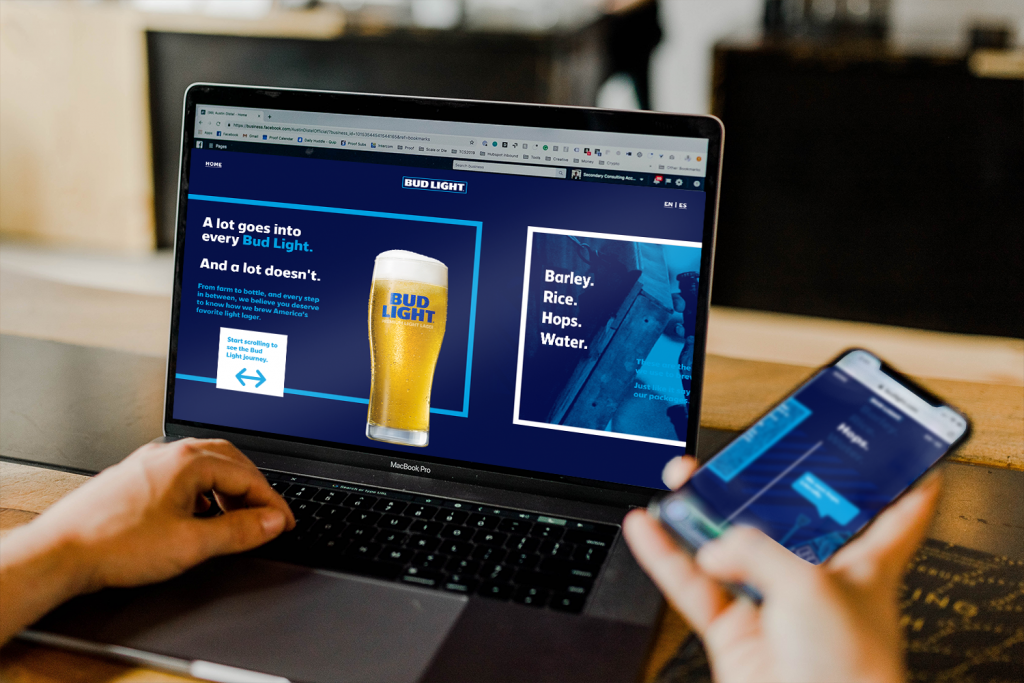Each year, it gets harder to break through a crowded market and get your brand off the ground. Not only are you up against the immediate competition related to your category, but you are competing against every other brand that’s fighting for a spot in the headspace of today’s consumer. There is only so many brands that can occupy that space, and you want to be top of mind.
So how do you kick things off and gain brand recognition? Let’s first break down and define the two key words in brand marketing:
What is Your Brand?
Your brand is your identity. It’s the collective emotional response to your company – it’s what you want your consumer to think about regarding your company (your brand identity) and also what the consumer actually thinks about your company (your brand image). This can come through as a mission statement and core values or expressed through your culture. Often it can be an intangible feeling that is hard to put into a statement. Some of the most successful brands provide consumers a brand feeling, not just a direct brand message.
What is Marketing?
Marketing is how to create awareness of your brand. It’s how you visualize and communicate a message. It’s the combination of text and visuals so that consumers have a clear understanding of your identity. Marketing is one of the tools you use to attain your company goals. There are many methods of marketing to consider when you are wanting to get the word out about your product or service: social media, traditional advertising, field & retail sampling… the list goes on.
Visualize Your Voice & Show “Your Special”
It’s easy to market on base-line, functional benefits, but it’s an approach that’s not going to set you apart from your competition. It’s not enough to simply say that your new sparkling water brand is refreshing. Most waters can say that. Why should I drink your beverage compared to the other options that are out there? What is the singular thing I can get from you that I can’t get from other brands? It’s integral to communicate your key differentiators.
In terms of both your product and the different touchpoints on your customer journey, there needs to be a consistent voice that emphasizes what sets you apart. At the same time, it’s not all about you. You need to make the consumer the center of the story. Your client is the hero, not your brand.They are your hero or heroine, and it is your product or service that allows them to succeed in this story. Despite the complexity of the tools that can be used to show what makes your brand unique, at the end of the day, the approach to providing value and valuable content has not changed. Think of an elevator pitch that can sell a consumer in one sentence or less on your company or product. You can reduce this even further and think about what word or handful of words with which you want your company to be associated. Clever, natural, joyful, helpful… whatever the words are that you decide on, use these handful of words to help you visualize your brand and flesh out your brand’s story.
Explore Multiple Methods that Excite and Engage
People are wrong when they say, ‘know your audience.’ Just identifying whothey are isn’t enough. You have to understand how your audience acts.The road map to connecting with consumers is not a one-size-fits-all for every brand. Most people are not going to immediately pick up the phone and buy your product like an informercial demands. It can take up to seven unique touchpoints to trigger a response while the consumer is in the research phase of the buying cycle. These touchpoints and their overall effectiveness should be identified through research and trial & error. Engagement on digital platforms or in the field helps humanize your brand, but it is also a way for you to learn how your audience communicates and what other brands they are engaging with. Knowing how your target audience thinks and acts allows you to curate a customer journey that will entice and excite.
Gleaning knowledge from your customers and listening to what they have to say does three things:
- Builds trust and shows that you empathize with their needs
- Educates you on what features you should be highlighting
- Ensures that consumers are receiving the full value of your product or service
Once you decide what creates the best response for your desired goal, it’s a matter of setting up several pieces to create a cohesive and effective narrative. In the end, providing a specific experience and delivering the product when and where your audience exists, is essential to showing that you are worthy of their attention. You want a mutually beneficial long-term relationship, not simply a quick transactional response. The key to achieving is to be in the real world, not the ad world.
Brand or Be Branded
Positive brand marketing is when your brand image and brand identity are aligned. Building a strong foundation with a clear voice and a defined direction will allow your brand to excel. Brand marketing is essential to your business because it’s what leads the way. It is what they feel when they first explore your website and social pages; it is the language you use when you meet an interested consumer in person; it is what the consumer says to their friends and family about your company when you’re not in the room. Before you even launch a campaign, it is absolutely necessary to think about every step that your first customer will experience. Investing in your brand now will increase your brand’s value over time and, in-turn, your company’s profits.
Are you having trouble knowing what your next marketing step should be?
Contact Chris Jobst
314.206.7804 or ChrisJ@switch.us


















